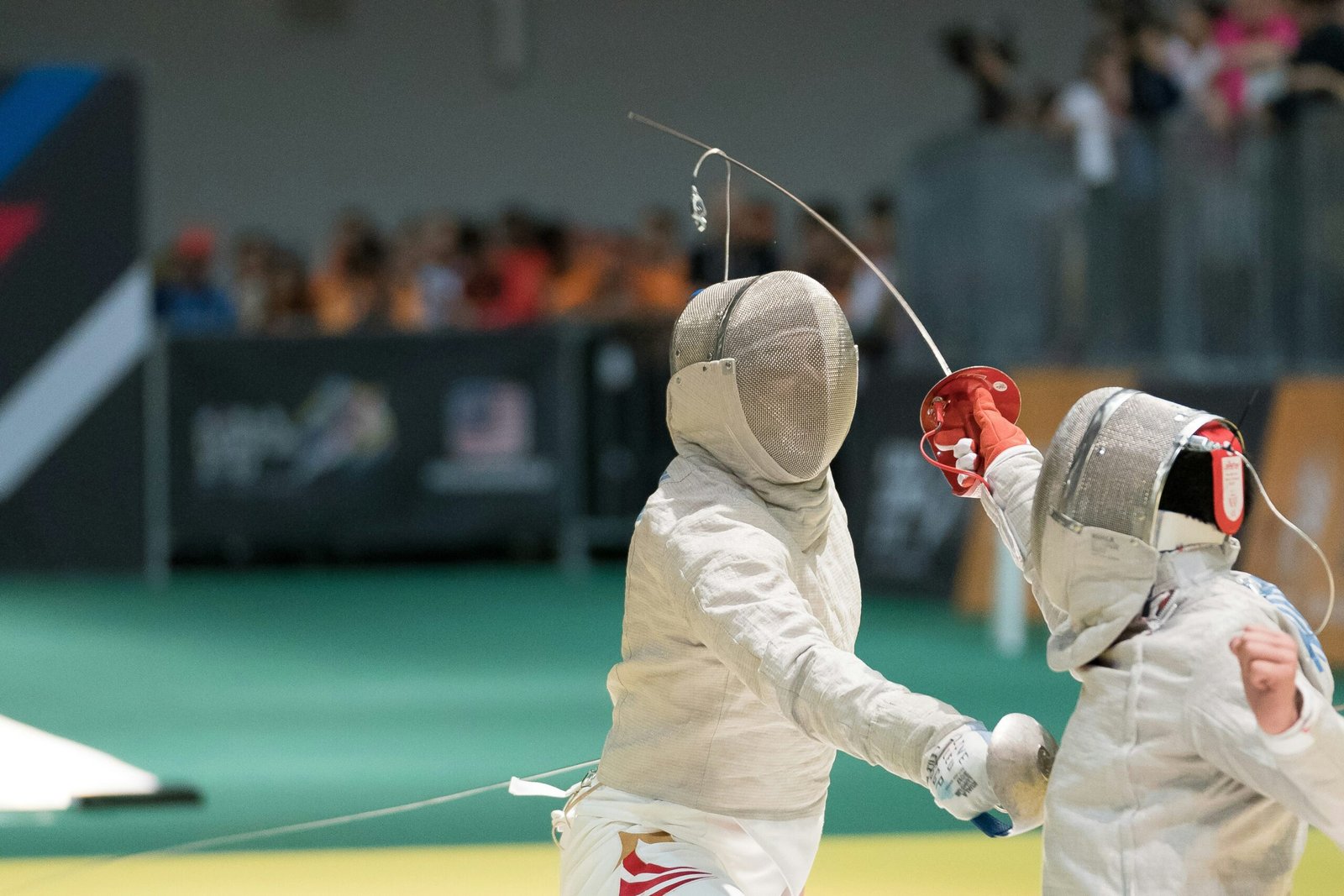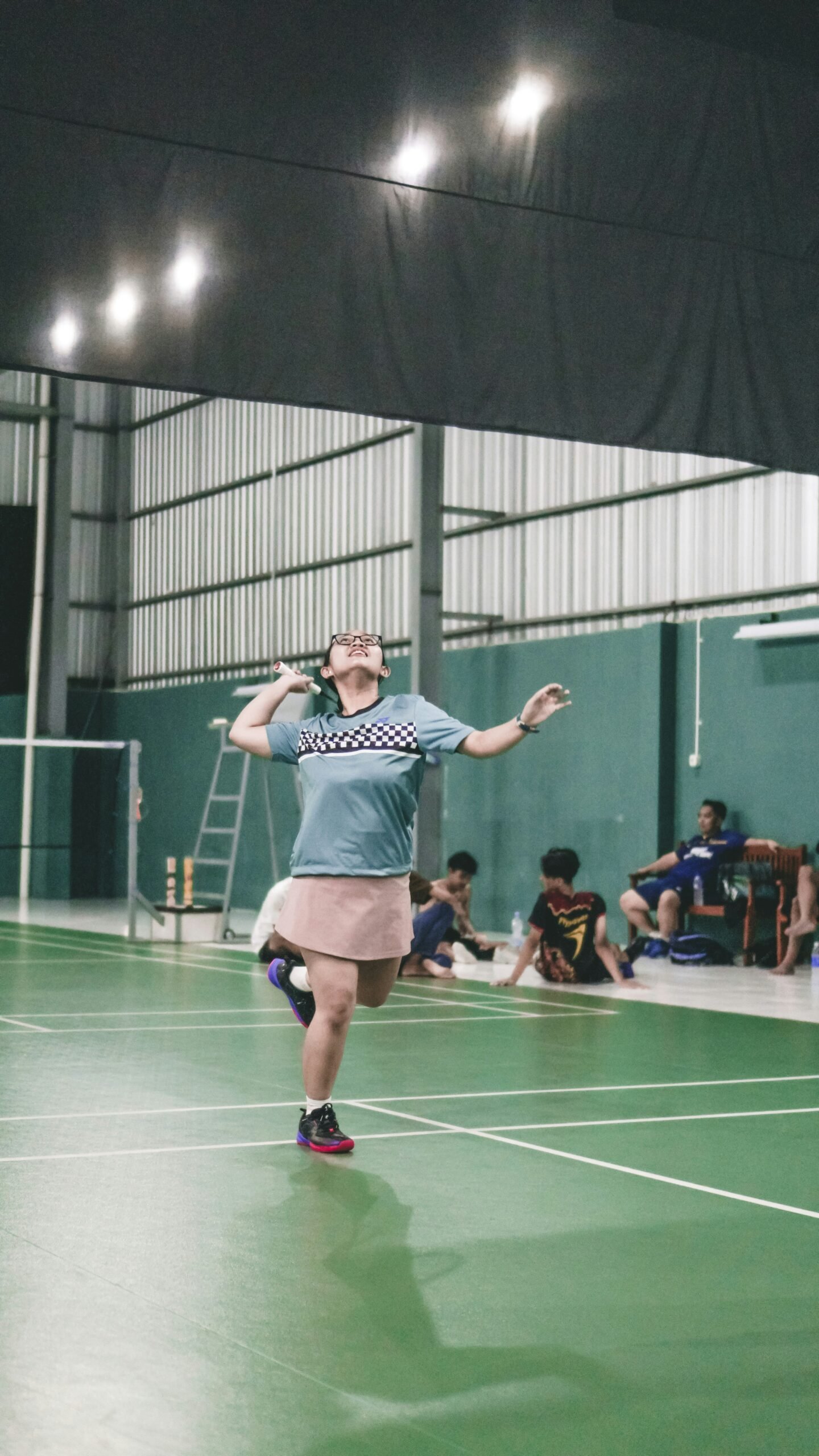Introduction to Visualization in Sports
Visualization, often referred to as mental imagery or mental rehearsal, is a cognitive technique utilized by athletes to enhance their performance by creating mental representations of physical movements. This process involves imagining oneself executing a skill or participating in a competition, ultimately contributing to improved focus, confidence, and execution during actual performance. The concept of visualization stems from psychological research that highlights the mind’s ability to influence bodily functions and performance outcomes.
Traditionally rooted in sports psychology, the practice of visualization gained traction in the late 20th century as athletes recognized the need for comprehensive mental training alongside physical conditioning. Athletes from various disciplines, including gymnastics, swimming, and team sports, have increasingly employed visualization strategies to sharpen their competitive edge. By visualizing success, athletes prepare themselves for the physical and mental challenges posed by their respective sports, which helps them achieve consistency and peak performance levels.
One notable aspect of visualization is its distinction from other mental training techniques, such as self-talk or mindfulness. While self-talk focuses on verbal affirmations and mindfulness nurtures present-moment awareness, visualization engages the imagination to create vivid mental images. This technique not only serves as a rehearsal for upcoming contests or routines but also aids in overcoming performance anxiety and fostering a positive mindset. As acceptance of visualization grows within the athletic community, it is increasingly recognized as a foundational tool for maximizing sports performance.
The significance of visualization extends beyond just mental preparation; it plays an essential role in honing an athlete’s focus and concentration. By regularly practicing visualization, athletes can optimize their training sessions and competitions, ensuring that their mental and physical efforts are aligned. Overall, this powerful mental tool equips athletes to realize their full potential and navigate the complexities of high-level competition.
The Science Behind Visualization
Visualization, a technique widely used in sports psychology, is grounded in various psychological and neurological principles that provide a compelling framework for its effectiveness in enhancing athletic performance. One of the predominant concepts associated with visualization is mental rehearsal. This involves using imagination to simulate athletic performance, enabling athletes to practice without physical exertion. Research indicates that visualizing a particular movement activates similar neural pathways in the brain as performing the movement itself. Consequently, this mental engagement can improve motor skills through enhanced neurological connections.
Neural pathways, the pathways formed by neurons in the brain, play a crucial role in this process. Each time an athlete visualizes executing a specific skill, such as a precision shot in basketball or a perfect routine in gymnastics, they reinforce these neural pathways. This phenomenon not only aids in refining the execution of these skills when performed in real-life scenarios but also enhances memory retention related to those movements. Studies have demonstrated that athletes who engage in consistent mental visualization often outperform those who rely solely on physical practice.
Another critical aspect of visualization is the placebo effect, where belief in the efficacy of a technique can elicit significant psychological and physiological responses. When athletes visualize their success, they generate positive thoughts and emotions that can reduce performance anxiety. This diminished anxiety can lead to enhanced focus and concentration during competitions. Numerous studies advocate that athletes who incorporate visualization into their training routines often report lower anxiety levels and greater confidence, all of which are integral components of peak performance. Hence, the psychological effects of visualization extend beyond mere imagery, illustrating its holistic impact on performance enhancement.
Types of Visualization Techniques
Visualization techniques play a crucial role in enhancing sports performance by allowing athletes to mentally rehearse and prepare for their competitions. Various methods exist, each serving different purposes and scenarios. Understanding these techniques can help athletes utilize them effectively for maximum benefit.
One of the most widely used techniques is guided imagery, which involves athletes mentally picturing themselves performing specific tasks or routines successfully. In this method, an athlete often works with a coach or sport psychologist who provides detailed descriptions to help create vivid mental images. The purpose is not just to visualize the outcome but to experience the sensations, emotions, and context associated with successful performance. This technique is particularly beneficial during times of increased stress, such as before important competitions or when recovering from injury.
Another common approach is outcome visualization, where athletes focus on the end result of their performance. This technique encourages sports professionals to envision winning or achieving personal bests, reinforcing their belief in their capabilities. It is especially useful in sports that have clear outcomes, like races or scoring events, allowing athletes to align their mental focus with their goals.
Process visualization, on the other hand, emphasizes the steps and techniques essential for successful performance, rather than the outcome itself. Athletes mentally rehearse the precise movements and strategies needed to execute their performance effectively. This technique proves advantageous during training sessions and when preparing for complex physical tasks, such as executing a complicated gymnastics routine or performing a difficult martial arts maneuver.
Lastly, environment visualization focuses on simulating the competition environment. Athletes visualize elements such as the venue, crowd, and specific conditions under which they will compete. This technique can alleviate anxiety associated with unfamiliar settings and help the athlete feel more at ease when arriving for an event.
By understanding and implementing these varied visualization techniques, athletes can enhance their mental preparedness, thereby optimizing their performance on the field or court.
The Role of Visualization in Different Sports
Visualization is a powerful mental tool that is employed across various sports disciplines to enhance performance and cultivate a competitive edge. Athletes, whether participating in individual or team sports, utilize this technique to mentally rehearse their actions and visualize success. In team sports such as soccer and basketball, players often visualize plays and strategies before executing them in a game setting. For instance, a professional basketball player might imagine the trajectory of a perfect three-point shot, allowing their mind to pre-condition their body for the actual moment of execution.
In individual sports like tennis and golf, visualization serves a critical role as well. Athletes often adopt pre-shot routines where they envision their swings or strokes, reinforcing muscle memory and heightening focus. A renowned tennis player may visualize the ball’s path as it sails over the net before engaging in a critical serve. This practice not only enhances their confidence but also reduces performance anxiety by familiarizing the athlete with various game scenarios.
Combat sports, including boxing and martial arts, heavily rely on visualization to prepare athletes for the physical and psychological demands of the sport. Fighters visualize their movements, strategy, and even the potential responses of their opponents. This technique can be demonstrated by a seasoned boxer who visualizes the angles of offense and defense while preparing for a bout. Furthermore, athletes may reflect on prior matches to visualize overcoming challenges faced in those encounters, thus building a mental arsenal against fear or doubt.
The integration of visualization across these diverse sports evidences its versatility and effectiveness as a performance-enhancing tool. By mentally rehearsing scenarios and outcomes, athletes not only improve their skill sets, but they also fortify their mental resilience, ensuring they are well-prepared for competition.
Mental Preparation and Focus through Visualization
Mental preparation is a crucial aspect of athletic performance, and visualization serves as a powerful tool in enhancing this preparation. Athletes utilize mental imagery to create vivid scenarios that simulate real-life competition, thus fostering a positive mindset. This technique can significantly affect an athlete’s self-confidence, allowing them to approach their performance with assurance and determination. By visualizing successful executions of their skills, athletes can reinforce their belief in their abilities, which is essential in high-pressure situations.
Visualization involves mentally rehearsing specific movements or strategies that an athlete intends to perform. This practice not only helps in fine-tuning skills but also aids in managing anxiety. When an athlete visualizes a successful outcome, it triggers a psychological response that aligns closely with actual performance. As a result, this method can reduce fear of failure and cultivate a supportive internal dialogue, essential during critical moments in competitions.
Moreover, proper concentration is vital in sports, and visualization techniques enhance an athlete’s ability to focus. One effective strategy is guided imagery, where athletes close their eyes and vividly picture themselves succeeding in their sport. This process allows them to replicate the physical sensations associated with peak performance, thus strengthening their focus on the task at hand. Another approach is setting specific visualization routines before competitions, which can help create a consistent mental preparation strategy. Through this regular practice, athletes develop a heightened awareness of their mental state, reinforcing concentration and enabling better performance under pressure.
Incorporating visualization into an athlete’s regimen not only sharpens their mental edge but also equips them with tools to overcome obstacles, ensuring they remain focused and prepared, regardless of the challenges that lie ahead.
Injury Recovery and Visualization
In the realm of sports performance, visualization has emerged as a critical tool in the injury recovery and rehabilitation processes. When athletes experience injuries, their physical healing is often intertwined with their mental state. Visualization enables injured athletes to mentally rehearse their return to sport, fostering a mindset that supports and accelerates healing.
Research has indicated that mental imagery can stimulate neural pathways relevant to physical tasks, thereby enhancing an athlete’s potential for recovery. By employing visualization techniques, athletes are able to envision themselves performing at their best despite physical limitations due to injury. This practice fosters a sense of control and confidence that can diminish feelings of helplessness and frustration that often accompany the recovery journey.
For instance, prominent athletes such as Tiger Woods and Michael Phelps have attested to the benefits of visualization during their recovery from injuries. Woods extensively used mental imagery while recovering from his knee surgery, picturing himself not only walking but also returning to competitive golf. Concurrently, Phelps integrated visualization into his training regimen, visualizing his movements in the water to maintain athletic sharpness, even during periods of enforced rest. Such examples serve to emphasize how effective visualization can be in maintaining a proactive and positive outlook during recovery.
Visualization can also support athletes in setting achievable rehabilitation goals. By mentally rehearsing their progress and success, athletes can enhance motivation, thereby overcoming obstacles encountered during physical therapy. This method enhances not only physical recovery but also emotional resilience, which is vital in returning to peak performance. The synergy of physical and mental rehabilitation through visualization has proven benefits for athletes recovering from injuries, cultivating a strong and motivated mindset that is crucial for any successful comeback.
Challenges and Misconceptions about Visualization
Despite the growing body of evidence supporting the efficacy of visualization in sports performance, several misconceptions and challenges hinder its widespread adoption among athletes and coaches. One significant challenge is the skepticism surrounding visualization techniques. Many individuals question whether mental imagery can significantly enhance physical performance, often viewing it as an unproven or abstract concept rather than a legitimate training tool. This skepticism can be attributed to a lack of understanding of how visualization works and the physiological and psychological mechanisms behind it.
Another challenge is the difficulty athletes face when attempting to implement visualization techniques. For some, the process of creating vivid mental images can be daunting, especially if they have not practiced mental training before. Factors such as concentration, relaxation, and the ability to recall specific scenarios play a pivotal role in successful visualization. Athletes may find it hard to focus their minds or build effective mental imagery that corresponds to their physical performances, which can lead to frustration and disengagement.
Furthermore, proper guidance and training are essential for effectively integrating visualization into an athlete’s overall routine. Without appropriate instruction, athletes may misapply techniques or develop ineffective imagery practices that do not contribute to their performance. Coaches and trainers must recognize the importance of teaching visualization along with physical training, ensuring that athletes understand how to utilize it optimally. This integration not only enhances the effectiveness of visualization but also boosts athletes’ confidence in using it as a complementary tool in their training regimen.
Ultimately, addressing these challenges and misconceptions is crucial for athletes and coaches who wish to harness the full potential of visualization in sports performance.
Practical Tips for Sports Visualization
Incorporating visualization into sports performance training can significantly enhance an athlete’s mental readiness and improve overall outcomes. To effectively implement this technique, athletes and coaches can follow several practical tips that facilitate a productive visualization experience.
First and foremost, it is essential to create a conducive environment for visualization. This involves identifying a quiet and comfortable space free from distractions, allowing the mind to focus entirely on the imagery associated with the performance. Soft lighting and minimal noise can aid in fostering a calming atmosphere, promoting deeper engagement in the visualization process. Additionally, the use of comfortable seating or lying positions can enhance relaxation and mental clarity.
Establishing a consistent routine is another important factor in successful sports visualization. Athletes should dedicate a specific time during their training schedule to practice visualization techniques, ideally at a time when they are most alert and receptive. This may include visualizing before physical practices, during warm-ups, or even as part of a post-training cool-down. By treating visualization as an integral part of the training regimen, athletes reinforce its significance and maximize its benefits.
Moreover, utilizing available tools such as apps or recorded scripts can significantly improve the visualization process. Many apps are designed specifically for athletes and include guided visualization scripts tailored to various sports and performance situations. These resources can serve as a helpful foundation for athletes, particularly those new to visualization practices. Recorded scripts, whether created by a coach or chosen from existing resources, allow athletes to immerse themselves in imagery that resonates with their specific goals.
By creating the right environment, establishing routines, and leveraging technology, athletes can effectively incorporate sports visualization into their training, ultimately enhancing their performance.
Conclusion: Embracing Visualization for Peak Performance
Throughout this discussion, it has become evident that visualization plays a pivotal role in enhancing sports performance. Athletes increasingly recognize the substantial benefits of incorporating mental imagery into their training regimens. Visualization allows for a unique integration of the mind and body, enabling athletes to rehearse their movements, refine techniques, and develop a high level of confidence in their abilities. This mental practice not only enhances skill acquisition but also fosters psychological resilience, which is crucial when confronted with the pressures of competition.
The findings support the notion that mental imagery can significantly influence performance outcomes. Successful athletes often utilize visualization to mentally prepare for competitions, creating detailed imagery of their ideal performance scenarios. By mentally simulating various situations, athletes develop a proactive approach to potential challenges, which enhances their preparedness and allows for better emotional management during events.
Moreover, coaches play an essential role in this process by encouraging their athletes to adopt visualization as a regular practice. Establishing a culture that values mental training can lead to a holistic approach to athlete development. When both coaches and athletes prioritize visualization, they can promote a deeper understanding of the mental aspects of sports, ultimately leading to improved performance.
In conclusion, embracing visualization as a critical component of training can lead to transformative results in sports performance. Athletes and coaches alike should leverage the power of mental imagery, making it an integral part of their preparation strategy. With consistent practice, visualization can enhance not only athletic skill but also mental fortitude, providing athletes with the tools necessary to achieve peak performance on and off the field.






+ There are no comments
Add yours